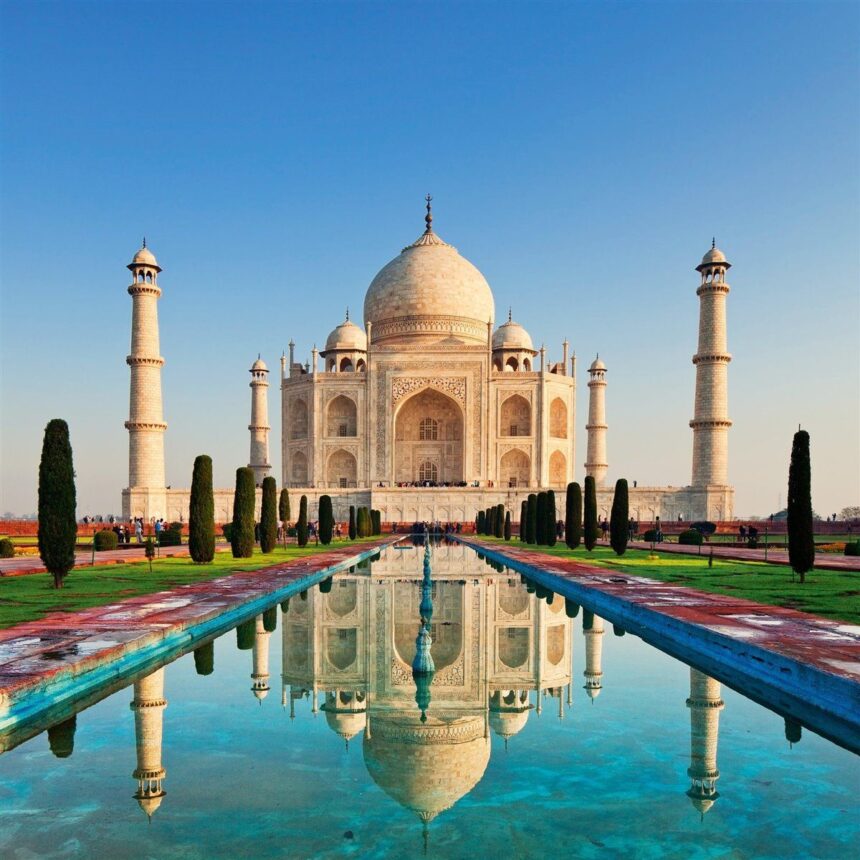Fascinating Facts About Agra That Will Amaze You
Agra, located in the northern Indian state of Uttar Pradesh, is a city steeped in history, culture, and architectural grandeur. Best known for the Taj Mahal, one of the Seven Wonders of the World, Agra draws millions of tourists each year from across the globe. But beyond its iconic monuments, Agra holds a rich tapestry of history, cuisine, arts, and societal significance.
This article delves into Agra’s history, essential facts, timeline, significance, FAQs, cultural impact, daily life relevance, observances, and inspirational insights, presented in an engaging, human-centered style.
History of Agra
Agra’s history is as vibrant as its streets:
Ancient Era: Agra has references dating back to the Mahabharata era, with archaeological evidence of settlements along the Yamuna River.
Medieval Period: Agra became a prominent city during the Delhi Sultanate era in the 12th–16th centuries.
Mughal Era: The city flourished under the Mughals. Emperor Akbar made Agra his capital in 1558, followed by Jahangir and Shah Jahan. The construction of the Taj Mahal by Shah Jahan in memory of Mumtaz Mahal marked the zenith of Mughal architectural excellence.
Colonial Period: Agra witnessed the influence of the British Raj, which brought infrastructural changes, railways, and modernization.
Post-Independence: Today, Agra is a UNESCO World Heritage hub, attracting global tourists and fostering cultural preservation.
Key Facts About Agra
Iconic Monuments: The Taj Mahal, Agra Fort, Fatehpur Sikri, and Itmad-ud-Daulah’s Tomb define the city’s architectural heritage.
Geography: Located on the banks of the Yamuna River, Agra enjoys a strategic position in the fertile Gangetic plain.
Population: Agra has a population of over 1.6 million, blending traditional lifestyles with modern urbanization.
Cultural Heritage: Agra hosts a rich tapestry of Mughal-inspired art, music, dance, and cuisine.
Economy: Tourism, handicrafts, leatherwork, and marble inlay artistry are major contributors.
Cuisine: Agra is famous for petha, Mughlai dishes, and street food like dalmoth and bedai.
Festivals & Events: Diwali, Holi, Eid, and Taj Mahotsav (cultural festival) highlight Agra’s cultural vibrancy.
Climate: Agra experiences hot summers (April–June), monsoon rains (July–September), and cool winters (December–February).
Transport & Connectivity: Well-connected by road, rail, and air. The Agra Airport and Yamuna Expressway enhance accessibility.
Education & Research: Agra houses historical research centers, universities, and institutions promoting cultural studies.
Timeline of Agra
6th Century BCE: Earliest known settlements along the Yamuna River.
12th–16th Century: Delhi Sultanate influence; Agra rises as a strategic city.
1558: Akbar establishes Agra as Mughal capital.
1628–1658: Shah Jahan reigns; construction of Taj Mahal and other iconic monuments.
18th Century: Decline of Mughal power; regional conflicts affect the city.
19th Century: British colonial administration introduces infrastructure and trade.
1983: Taj Mahal designated as UNESCO World Heritage Site.
21st Century: Agra develops tourism, heritage conservation, and modern urban amenities.
Significance of Agra
Architectural Importance: Agra is synonymous with Mughal architecture, influencing Indian and global heritage.
Tourism Economy: Millions of visitors fuel local businesses, artisans, and hospitality sectors.
Cultural Hub: Festivals, arts, and crafts reflect India’s rich heritage.
Educational Value: Museums, historical research, and heritage walks provide learning opportunities.
Inspiration & Legacy: Monuments like the Taj Mahal inspire love, artistry, and architectural innovation globally.
Daily Life Impacts
Employment Opportunities: Tourism, handicrafts, hospitality, and transportation provide livelihoods for residents.
Cultural Continuity: Traditional arts, music, and cuisine maintain social cohesion and identity.
Urban Development: Roads, healthcare, and public transport have improved the quality of life.
Environmental Awareness: Preservation of monuments and heritage sites fosters a sense of responsibility.
Community Engagement: Local festivals and events encourage communal participation and social bonding.
Observance and Important Points
Respect Heritage Sites: Avoid littering, follow photography rules, and respect restricted areas at monuments.
Cultural Etiquette: Dress modestly when visiting religious or historical sites.
Tourist Safety: Summer temperatures can exceed 45°C; hydrate and plan visits early.
Local Economy Support: Purchase souvenirs, handicrafts, and local food to contribute to sustainable tourism.
Festivals & Timings: Taj Mahotsav and other cultural events showcase local arts and crafts; plan visits around these for enhanced experience.
FAQs About Agra
Q1: What is the best time to visit Agra?
A: October to March offers pleasant weather suitable for sightseeing and outdoor activities.
Q2: How do I reach Agra?
A: Agra is well-connected by train, road, and air. Yamuna Expressway connects Delhi to Agra in around 3–4 hours.
Q3: What are the must-visit places?
A: Taj Mahal, Agra Fort, Fatehpur Sikri, Itmad-ud-Daulah’s Tomb, Mehtab Bagh, and Akbar’s Tomb in Sikandra.
Q4: How much time is needed to explore Agra?
A: A minimum of 2–3 days is recommended to cover main attractions and enjoy local culture.
Q5: Is Agra suitable for family trips?
A: Yes, Agra offers family-friendly attractions, guided tours, cultural experiences, and safe accommodations.
Social and Cultural Significance
Heritage Preservation: Monuments reflect Mughal legacy and India’s historical narrative.
Community Engagement: Local artisans, guides, and performers benefit from tourism and cultural promotion.
Environmental Awareness: Efforts to preserve the Taj Mahal and Yamuna River encourage responsible tourism.
Cultural Exchange: Visitors interact with locals, enhancing global appreciation of Indian history and arts.
Education & Research: Historical sites support studies in architecture, art, and cultural heritage.
Wishing and Inspirational Perspective
Visiting Agra inspires:
Artistic Appreciation: The Taj Mahal’s symmetry, marble inlay, and gardens provide architectural inspiration.
Historical Curiosity: Exploring forts, tombs, and heritage walks enriches knowledge of India’s past.
Cultural Respect: Engaging with local traditions and cuisine fosters empathy and cross-cultural understanding.
Mindfulness & Reflection: The serene beauty of monuments like Taj Mahal encourages contemplation and personal reflection.
Connection & Legacy: Experiencing Agra links travelers to human history, love stories, and enduring artistry.
Conclusion: Importance in Daily Life and Society
Agra is not just a city; it is a living museum of India’s history, art, and culture. Its impact on daily life includes employment, education, and cultural preservation. The city fosters societal engagement through tourism, heritage conservation, and community participation.
The 10 fascinating facts about Agra illustrate why it continues to captivate visitors worldwide. From the architectural grandeur of the Taj Mahal to the vibrant street life, Agra offers a rich blend of history, culture, and inspiration. Understanding and respecting Agra’s heritage fosters appreciation for India’s past while contributing to sustainable tourism and societal development.








